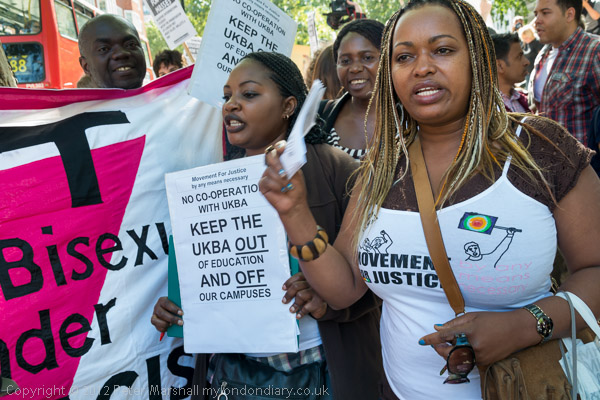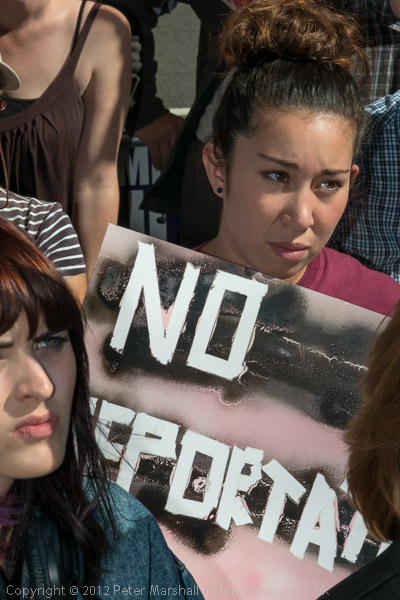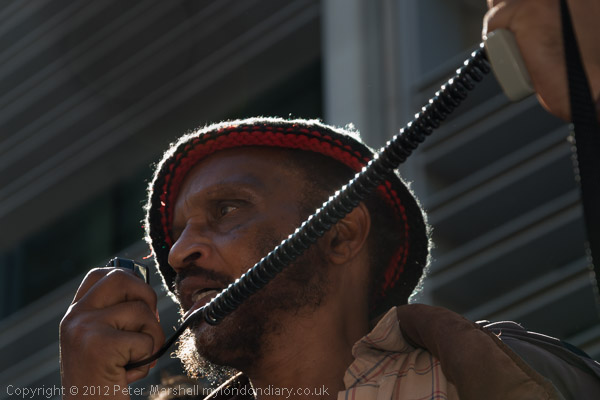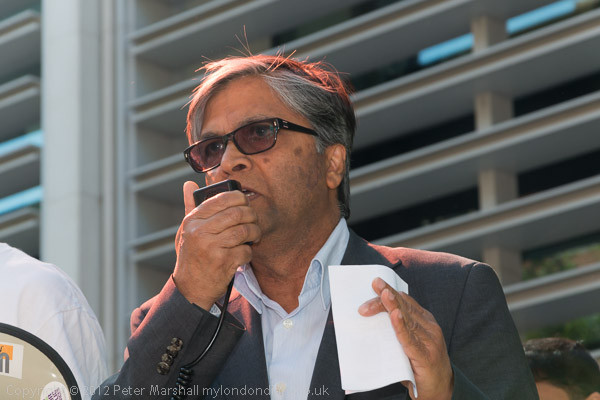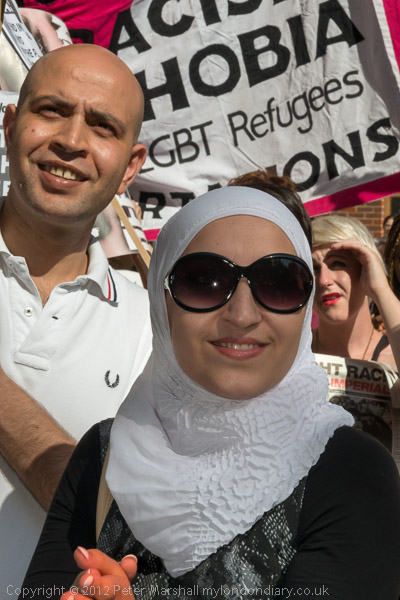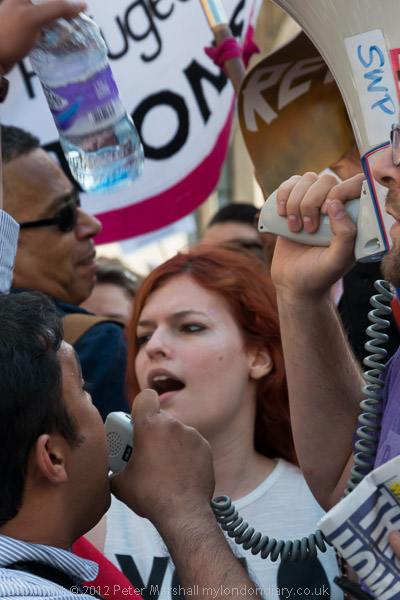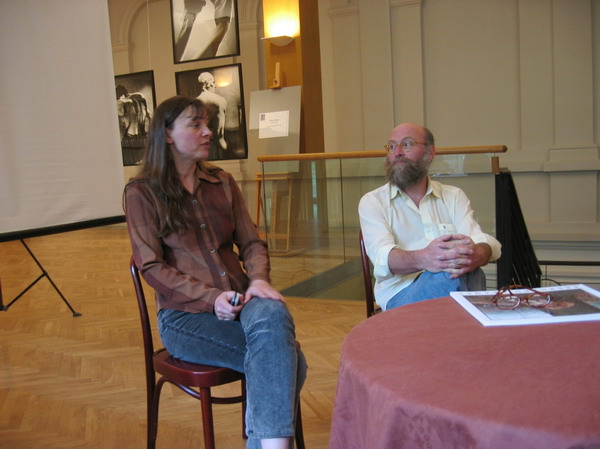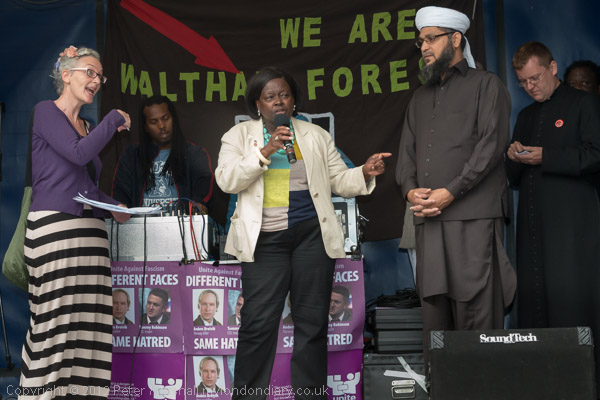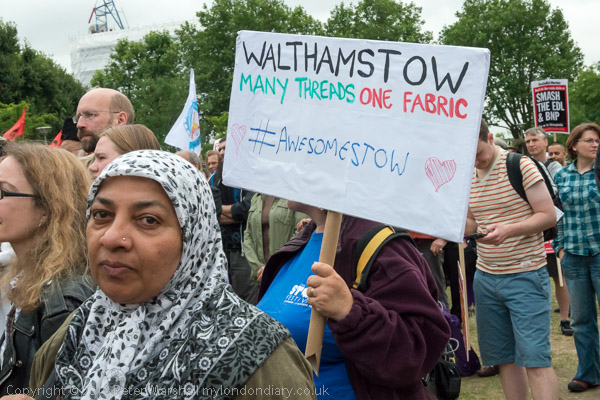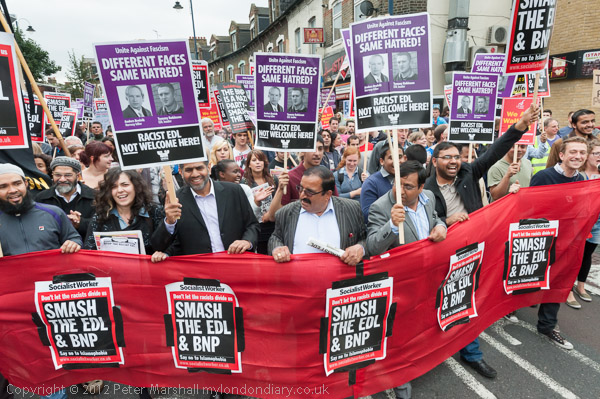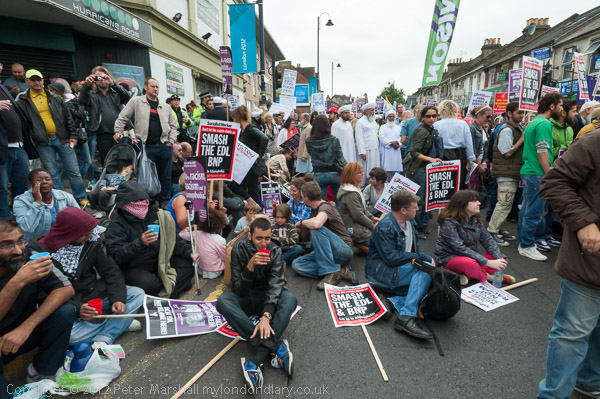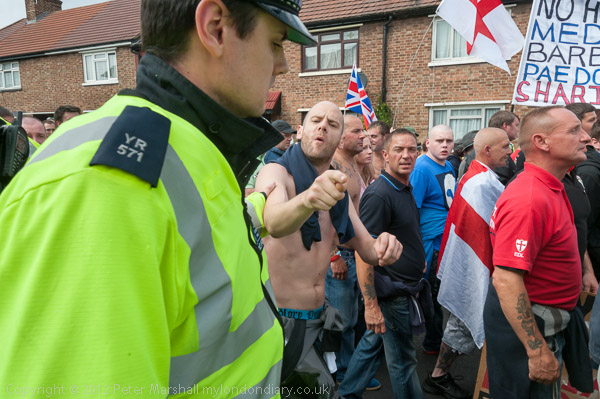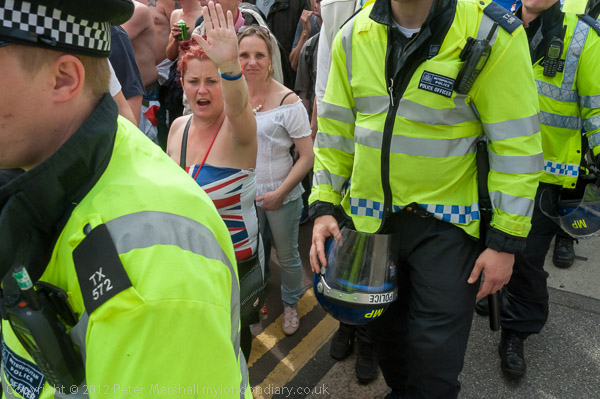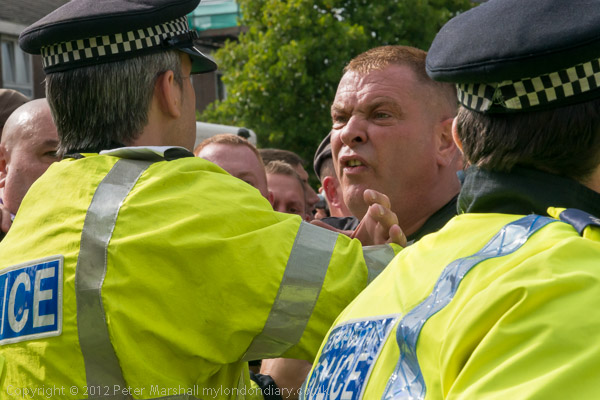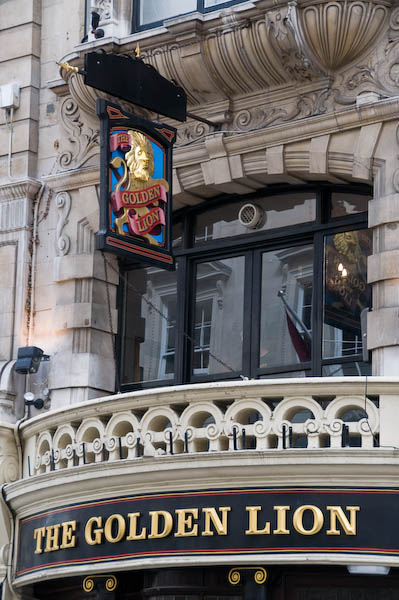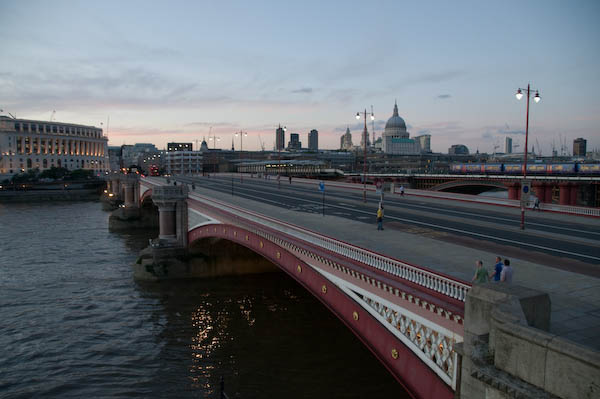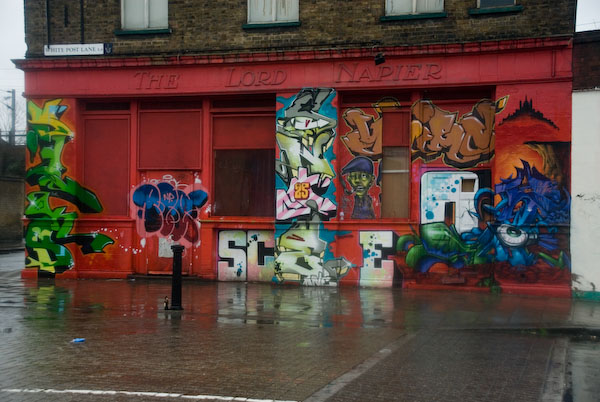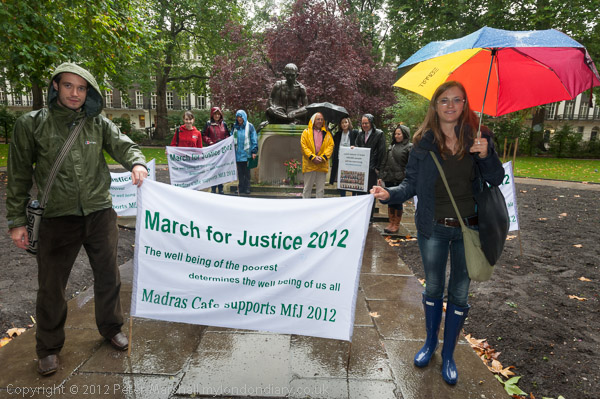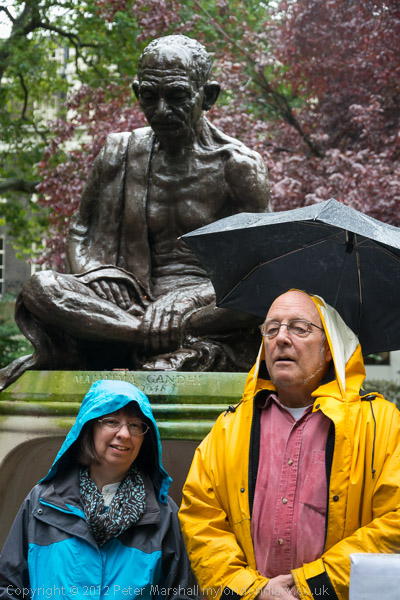It wasn’t a large event, with many friends unable to attend for various reasons, but we had a very pleasant evening, and for once I think I managed to talk to nearly everyone who came, even those who only had time to be there for a few minutes, most of whom missed my short speech – as did a one or two who came late. Of course not everyone is in London, and some photographers who might otherwise have been there were unfortunate enough to be in Birmingham with David Cameron and Boris Johnson. But it was good to see some old friends, and a few of London’s best photographers.
The show of course continues for another two or three weeks, at least until Friday 26 October, and I think will actually still be on the wall for the 27th.
Paul Baldesare kindly took some pictures with my Fuji X100 camera, and this is me giving the speech.
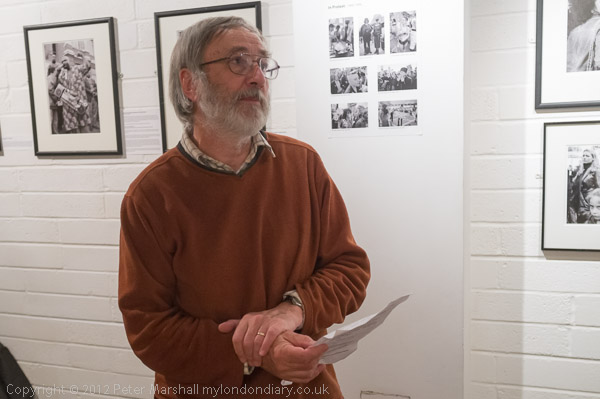
I’ll put some more from the evening on My London Diary later, and probably later still when I get the time, almost certainly after the show closes, I’ll put up some web pages with a permanent version of the show.
Among other cameras, Paul regularly uses the Fuji X-Pro1, and he commented how much better and more responsive the X100 is compared to that camera, even with the improvement made by the recent v2.00 firmware update. But we both agree on how hopeless the menu systems were on both cameras, really letting them down.
It’s also a shame that Fuji decided to produce the X100 with a 35mm rather than a 28mm lens; the add-on converter now available might solve that problem at a size, but it adds around 1.5 inches on the front of the lens, while a 28mm prime could possibly have given an even more compact camera. Even so I think I may buy one, as although some feel the small difference in focal length isn’t a big deal, for me it seems critical. For years I worked with a 35mm as a standard lens, and 28mm seems about the longest that works as a wide-angle.
So, here’s what I had to say last night:
I’d like to start by saying thanks to everyone for coming here tonight, it’s great to have your support.
When I heard from Maggi Pinhorn, the director of Photomonth, that this year’s festival was to have Radical London as its key theme, I made a few tentative enquiries among friends about a show we might put together, and was very firmly told this had to be a show of my own work.
As I’ve written for the wall, it was in some respects an impossible task. I first photographed protests, very much as someone taking part, in 1978, and over the next 34 years I’ve taken a few pictures. Since I started My London Diary, a dozen or so years ago, I’ve put on-line around 50,000 pictures from protests. It’s relatively easy to go through the digital work, much more of a task to look through and review almost 30 years of contact sheets, spread across something like a hundred large files – and one I’ve yet to finish.
I was also clear I wanted to show work that reflected both some of my own convictions about photography and a wide range of the issues that I had worked on. Not just a wall of my “best images” whatever that might mean, though one or two of those here have enjoyed a little success.
There is a lot of text on the wall, particularly with the colour images, something that reflects my feelings of the importance of context, but far too much for most to read on an opening night. I want to share a couple of paragraphs from my statement with you now:
“I was dissatisfied with the photographs that I saw published of protests – usually static groups of people and banners at the front of a march, or of a few of the better-known speakers, and wanted to produce something that more reflected my own experiences as someone taking part in the events. It was also important that the images were about something; I was more interested in telling stories through my pictures than in making pictures, though of course effective story-telling needs pictures that embody the skills of photography. But I wanted to be sure that I didn’t confuse the means with the end.”
In other words, photography isn’t about making pictures; making pictures is how you tell a story.
“The pictures from protests were part of a wider view of society and varied sub-cultures in London, work which also includes various religious and other festivals as well as daily life on the streets. As the title ‘In Protest’ was meant to suggest, it was in most instances in solidarity with those who were protesting and reflected my own viewpoint, and an attempt to put into practice the emotional imperative: ‘if it moves, photograph it.’ Anger, empathy, love, hate, lust, amusement, hope, excitement, affection, joy, admiration and sometimes just plain nosiness have all at times provoked my images, and some of those on show were taken with camera hiding my tears. ”
But there other things I’d like to say. There are many myths about photographers, some a hangover from the idea of the romantic artist starving in a garret (if anyone still knows what a garret is) and others about money-grabbing paparazzi hounding so-called celebreties. And we all know how many photographers it takes to change a light bulb! 136*. Its no surprise if some do exhibit fragile egos, when we are often disregarded, often expected to work for free and sometimes treated like something people have picked up from the street on their shoes.
But in making these pictures I’ve been very much aware of photographers as a community that works together, giving each other support and encouragement. There’s a sense in which this work is a communal effort – between myself and the other photographers but also with those many people who appear in the pictures – sometimes unwittingly and occasionally unwillingly, but in the public interest.
One of the first photographers who talked to me and gave me practical advice when I was photographing protests was the late Mike Cohen, best known for his work for Searchlight and the Morning Star, who once kindly characterised my approach to subjects as fly fishing compared to his coarse angling – though he was not being entirely fair to himself. Another who who is no longer with us but will be remembered by photographers here was Mike Russell, ‘Mini Mouse’, who organised the media coverage of Climate Camp. But there are many others fortunately still on their feet and some who have made it here tonight. Thanks to you all.
In particular I’d like to thank the small group of photographers I’ve worked closely with over the past 20 or more years, including Mike Seaborne, whose show at Foto8 opens next week, Dave Trainer, unfortunately not able to be here tonight, and the others. Most of all, Paul Baldesare without whose work this show would not have been possible – and also Sara who with him has so kindly organised the most important part of tonight’s opening. Thanks also to Phil and his staff at The Juggler, perhaps the nicest place in London to exhibit, and it’s sad that this may be the last show at the Shoreditch Gallery.
I want to leave you with one last thing. A few nights ago, lying in bed unable to sleep, worrying about the show and about this speech, my desperate thoughts somehow turned to photographer’s epitaphs. It came to me that one I might like to have earned would be ‘A photographer who never shot a picture.’ These images were never shot, seldom taken but always made.
Thank you.
It was good to hear from the gallery that there has been quite a lot of interest in the show with some people spending a lot of time looking at the pictures and reading the extended captions.
Doubtless it helps that it is one of the shows listed on the front page of the brochure as ‘exhibition highlights’ and it is also stands out slightly in the listings as I think the only entry with both a red and a green dot – red for being part of ‘radical london’ and green as part of ‘eatyourartout’. Unlike some café venues it is generally easy to look at the pictures without feeling you are intruding into the privacy of the customers, or that you need to buy food or drink, although they do have some very tempting filled rolls if you are feeling hungry.
Continue reading In Protest Opening Speech

